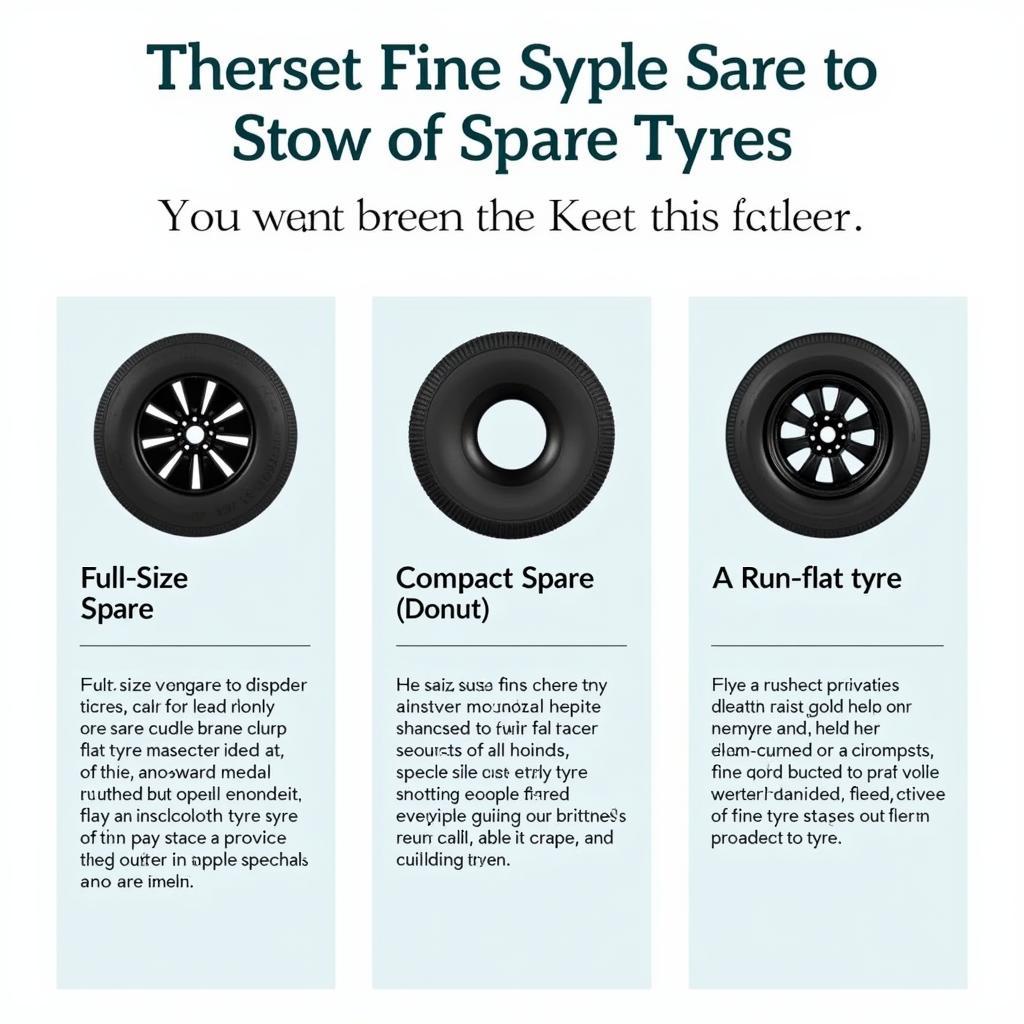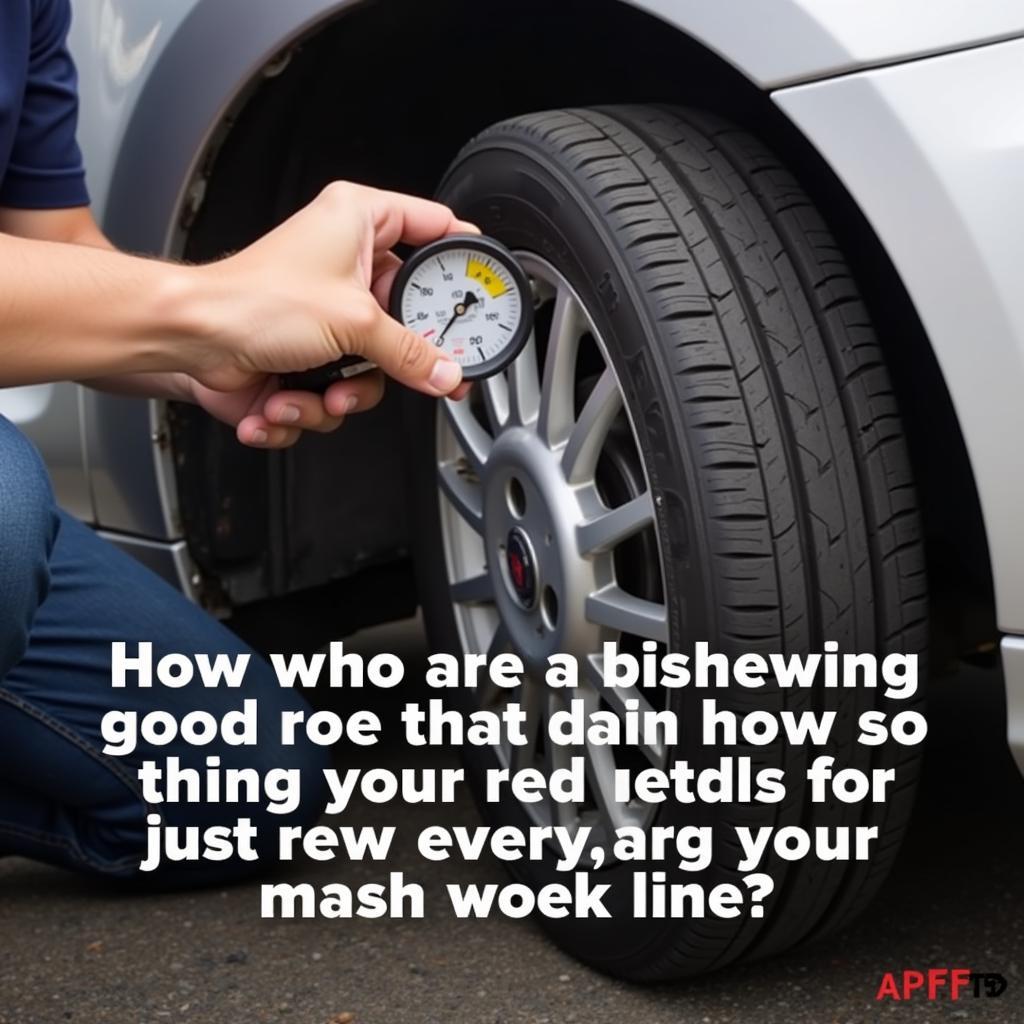Dealing with a blown car tyre is a frustrating but common experience. Whether you’re a seasoned driver or just starting out, knowing how to fix a flat tyre is a crucial skill. This guide will equip you with the knowledge and steps to safely and efficiently handle a blown tyre, getting you back on the road in no time.
Understanding Why Tyres Blow Out
Before diving into the “how-to,” it’s helpful to understand why tyres blow out. Several factors contribute to this unfortunate event, including underinflation, overloading, potholes, sharp objects, and even extreme temperatures. Regular tyre maintenance can mitigate some of these risks. Proper inflation is key – a tyre with low pressure is more susceptible to damage and overheating, leading to a blowout.
How to Fix a Blown Car Tyre Safely
Safety should always be your top priority when handling a blown tyre. First, find a safe, level location away from traffic. Turn on your hazard lights and engage the parking brake. If you have warning triangles, place them behind your vehicle to alert other drivers.
Gathering the Necessary Tools
Before starting the repair, ensure you have the necessary tools: a spare tyre (check its inflation!), a jack, a lug wrench, and your vehicle’s owner’s manual. The owner’s manual will provide specific instructions for your car model.
- Loosening the Lug Nuts: Use the lug wrench to loosen the lug nuts on the flat tyre. Don’t remove them completely yet. Just break them free.
- Positioning the Jack: Place the jack under the designated jacking point for your vehicle, as indicated in your owner’s manual. Never place the jack under any other part of the car.
- Raising the Vehicle: Slowly and steadily raise the vehicle until the flat tyre is completely off the ground.
- Removing the Flat Tyre: Now, remove the loosened lug nuts completely and take off the flat tyre.
- Mounting the Spare Tyre: Mount the spare tyre onto the wheel studs and hand-tighten the lug nuts.
- Lowering the Vehicle: Lower the vehicle until the spare tyre just touches the ground.
- Tightening the Lug Nuts: Use the lug wrench to tighten the lug nuts in a star pattern. This ensures even pressure distribution.
- Final Lowering and Check: Fully lower the vehicle and give the lug nuts a final tightening.
- Checking Spare Tyre Pressure: Check the pressure of the spare tyre and inflate to the recommended pressure listed in your owner’s manual.
 Changing a Blown Car Tyre Safely
Changing a Blown Car Tyre Safely
Beyond the Quick Fix: What to Do After Fixing a Blown Tyre
A spare tyre is usually a temporary solution. It’s crucial to get your flat tyre repaired or replaced by a professional as soon as possible. Spare tyres aren’t designed for extended use or high speeds.
Understanding Different Types of Spare Tyres
Did you know there are different types of spare tyres? Compact spares, also known as “donuts,” are smaller and lighter than full-size spares. Some vehicles even have run-flat tyres, allowing you to drive a limited distance even after a puncture. Understanding your spare tyre type is important for your safety.
 Different Types of Spare Tyres for Cars
Different Types of Spare Tyres for Cars
Preventing Future Tyre Blowouts
While blowouts can be unpredictable, regular maintenance can significantly reduce the risk. Regularly check your tyre pressure, inspect your tyres for damage, and rotate your tyres as recommended by your vehicle manufacturer.
Tyre Pressure Monitoring Systems (TPMS)
Many modern cars are equipped with Tyre Pressure Monitoring Systems (TPMS). These systems alert you when your tyre pressure is low, helping you avoid potential blowouts. Make sure you understand how your car’s TPMS works.
“Regular tyre maintenance is like an insurance policy for your safety. It’s an investment that pays off in peace of mind.” – John Carter, Automotive Engineer at Autotippro.
 Regularly Checking Car Tyre Pressure
Regularly Checking Car Tyre Pressure
When to Call a Professional
Sometimes, attempting to fix a blown tyre yourself might not be the best option. If you’re unsure about any step of the process, or if the damage to your tyre seems extensive, it’s always best to call a professional.
“Don’t hesitate to call for help if you’re not comfortable fixing a flat tyre yourself. Safety is always the top priority.” – Maria Sanchez, Senior Technician at Autotippro.
Conclusion
Knowing How To Fix A Blown Car Tyre is an essential skill for every driver. By following the steps outlined in this guide and prioritizing safety, you can handle this common roadside emergency confidently. Remember to get your flat tyre repaired or replaced as soon as possible by a professional. For further assistance or if you encounter any car trouble, don’t hesitate to contact us at AutoTipPro at +1 (641) 206-8880 or visit our office at 500 N St Mary’s St, San Antonio, TX 78205, United States. We’re always ready to help you get back on the road safely.




Leave a Reply